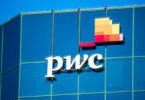Highlights
- Bank of America owns 82 patents
- Bank of America exec is “in the closet bearish” re blockchain
- ANZ exec believes most blockchain projects could use existing technology
- ANZ involved in two trade finance consortia, one blockchain one not
- First enterprise blockchain technology release was mid 2017
Today CNBC published excerpts from an interview with Cathy Bessant, Chief Operations and Technology Officer at Bank of America (BofA). Talking about blockchain, she said: “In my private scoreboard, in the closet, I am bearish.” Despite the skepticism, the bank owns 82 patents, more than any other U.S. bank, but that’s just in case blockchain makes it big.
“Spiritually, I want it to make us better, faster, cheaper, more transparent, more, you know, all of those things,” said Bessant.
“All of the big tech companies will come and say ‘blockchain, blockchain, blockchain.’ I say, ‘Show me the use case. You bring me the use case and I’ll try it’.” She is only slightly less bearish on private blockchains versus public.
Down under, Maria Bellmas Associate Director, Trade and Supply Chain Product at ANZ echoed similar sentiments. She believes that many blockchain projects attempt to fix problems that have been solved by existing technologies. And because blockchain is comparatively new, it’s less reliable and scalable.
Bellmas outlines the long-held belief that you need to start with a use case and analyze which technologies are appropriate. And avoid choosing blockchain because of the hype and then trying to find a use case. The latter approach is much less common in the last six to nine months.
ANZ is involved in two trade finance networks. In Hong Kong, it’s part of the eTradeConnect project which uses blockchain.
It’s also a member of the global Trade Information Network (TIN) which decided not to use blockchain because of speed-to-market and scalability concerns. “The network will have the option to move to blockchain when the technology matures,” Bellmas writes. TIN, like many of the blockchain trade finance consortia, is a registry of purchase orders and invoice flows.
Our take
Whenever we conduct an interview, we ask “why blockchain?” The proportion of well-considered responses has risen over time, but there are still occasionally projects where the arguments are unconvincing.
Also, each blockchain technology is different. Some are more suited to particular types of use cases. And we quite often see initiatives using technologies which may not be optimal for its use case, in our opinion.
The other issue is that blockchain is far newer than many realize. Bitcoin’s tenth anniversary is often bandied about. But enterprise blockchain technology is much younger. The first version of Hyperledger Fabric was released in July 2017, followed in October that year by R3’s Corda and JP Morgan’s Quorum enterprise version of Ethereum.
So it’s still very early days.







